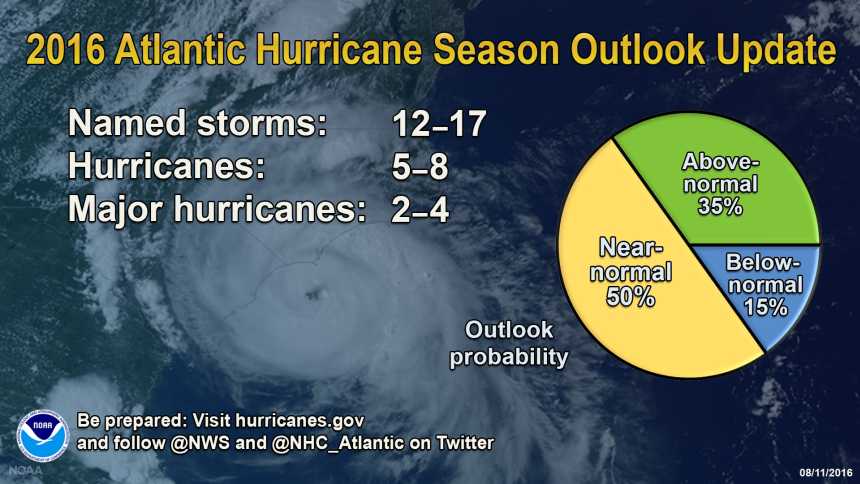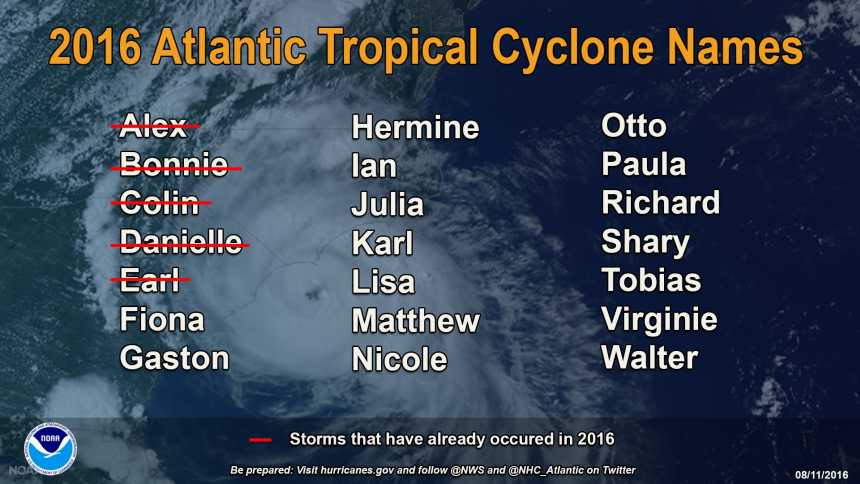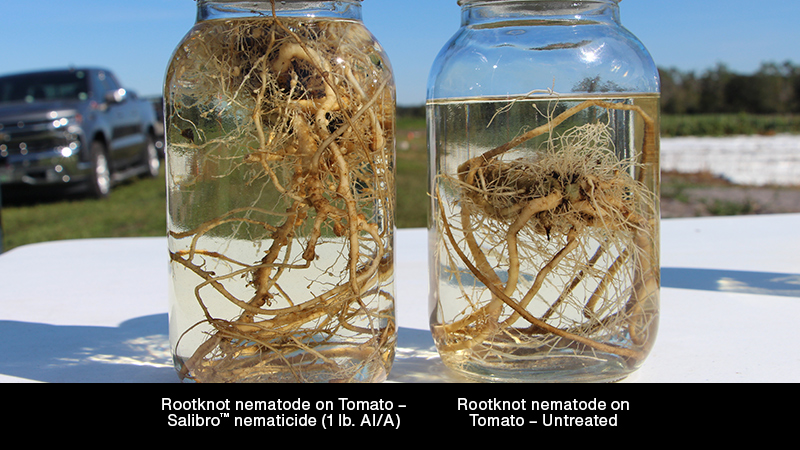Second Half Of Atlantic Hurricane Season Could Get Hairy
The newly updated 2016 Atlantic Hurricane Season Outlook from the National Oceanic and Atmospheric Administration (NOAA) has a stormy look to it.
The agency’s revised prediction calls for a higher likelihood of a near-normal or above-normal season compared to its initial outlook issued in May. If the predictions play out, this season would be the most active since 2012.
NOAA forecasters now expect a 70% chance of 12 to 17 named storms, five to eight of which are expected to become hurricanes, including two to four major hurricanes.

NOAA’s initial outlook called for 10 to 16 named storms, four to eight hurricanes, and one to four major hurricanes. These numbers were in line with Colorado State University’s Extended Outlook, which called for an average Atlantic hurricane season with 12 named storms, five hurricanes, two of those becoming major Hurricanes (Categories 3-5).
As of this posting, there have been five named storms, including two hurricanes.

“We’ve raised the numbers because some conditions now in place are indicative of a more active hurricane season, such as El Niño ending, weaker vertical wind shear, and weaker trade winds over the central tropical Atlantic, and a stronger west African monsoon,” said Gerry Bell, Lead Seasonal Hurricane Forecaster at NOAA’s Climate Prediction Center. “However, less conducive ocean temperature patterns in both the Atlantic and eastern subtropical North Pacific, combined with stronger wind shear and sinking motion in the atmosphere over the Caribbean Sea, are expected to prevent the season from becoming extremely active. Given these competing conditions, La Niña, if it develops, will most likely be weak and have little impact on the hurricane season.”
NOAA recently announced that the La Niña climate phase is slightly favored to develop during the hurricane season.









